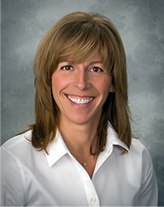We had the opportunity to interview Dr. Shella Farooki, who is a MSK fellowship-trained radiologist, and Dr. Lakshmi Sammarco, who is a neuroradiologist and the county coroner for Hamilton County in Cincinnati, OH.
Keep reading to learn more about them and their views on the radiology industry.
Q: Can you tell us a little bit about yourself? What made you want to get into the radiology field?
Farooki: I have been a radiologist for 17 years. I am married with two daughters, ages 15 and 11. I come from a family of physicians in all specialties so I always knew I was interested in medicine. I am a visual learner so the fields of pathology, dermatology, and radiology appealed to me. When I was in med school, I attended a summer program at the Children’s Hospital of Los Angeles where I was mentored by a world famous pediatric radiologist. She inspired me to go into the field of diagnostic radiology.
Sammarco: I graduated from med school in 1988. I had originally wanted to pursue orthopedic surgery and switched to radiology when I realized that what I really enjoyed about ortho was reading the films. I am an engineer and the physics and tech aspects of radiology combined with the aesthetics of the images produced always appealed to the scientist and artist in me. Being able to get answers for complex clinical questions by reviewing the medical imaging is more instantly gratifying than most medical specialties.
Q: What is your usual day like as a radiologist?
Farooki: No two days are the same as a radiologist. Sometimes I am working from home doing teleradiology and other days I travel onsite to the VA medical center. There are always a variety of cases.
Sammarco: I never have a usual day, even when I was practicing in a hospital. Most days now are a combination of sitting at my computer, dictating, answering questions and managing situations. I am also busy managing people, interfacing with the media and dealing with politics as an elected official.
Q: Were there any obstacles you had to overcome on the way to your career?
Farooki: I was lucky in that I had no significant obstacles that stood in the way of achieving my career goals.
Sammarco: I don’t think that there is a single female radiologist who has not had to jump many hurdles along the way. They could be general as with dealing with a busy career and family life or as personal and complicated as sexual harassment by peers, patients, employees or the powers that be. Sometimes, it was a simple as being taken seriously as a female physician.
Q: Have there been any recent medical innovations in the industry that have inspired you?
Farooki: I think machine learning and artificial intelligence are going to transform radiology in the upcoming decades. I don’t think we will be replaced, but I think our diagnostic acumen will improve as we use technology to help us become more accurate and more effective.
IBM’s Watson is already doing this in the field of oncology. There is some great work being done by the husband of a diagnostic radiologist at SUNY Stony Brook (Joel Saltz and Mary Saltz) that is connecting the fields of pathology and radiology to improve diagnosis. If we leverage our computing power to bring together all aspects of a patient and all their medical history and tests, we can become greater diagnosticians.
Sammarco: Every year it’s getting harder and harder to keep up with the technological advances in radiology. But it’s exciting and challenging. I am inspired by MR DTI Tractography and the 2D & 3D imaging reconstruction capability. I am particularly interested in virtual autopsy and the crucial role that we radiologists may be playing in forensic investigations soon.
Q: What advice do you have for young women who are interested in joining the radiology field?
Farooki: Young women, to a greater extent than men, are stuck with balancing work and family. Regardless of what field you choose, you have to balance an interest and love of what you do for a living with the needs of your family. Radiology is a field that is always changing and that requires constant learning of new technologies. If you don’t like change, you won’t enjoy this specialty.
Sammarco: Go for it! The flexibility of this field and the intensity can be personalized and that makes this much more attractive to those of us who make our family lives a priority. Don’t let the prejudice and denigrating affect your personal confidence.
Learn More About Specialty Teleradiology on Our Blog!
- 10 Reasons Why Your MRI Center Should Invest in a Teleradiology Solution
- How Policy Changes Could Increase Business For MRI Centers
- Women and Radiology: Working Toward a More Female-Populated Industry
- What Is Teleradiology?
And if have any questions about our services, please feel free to reach out to talk to one of our representatives.
